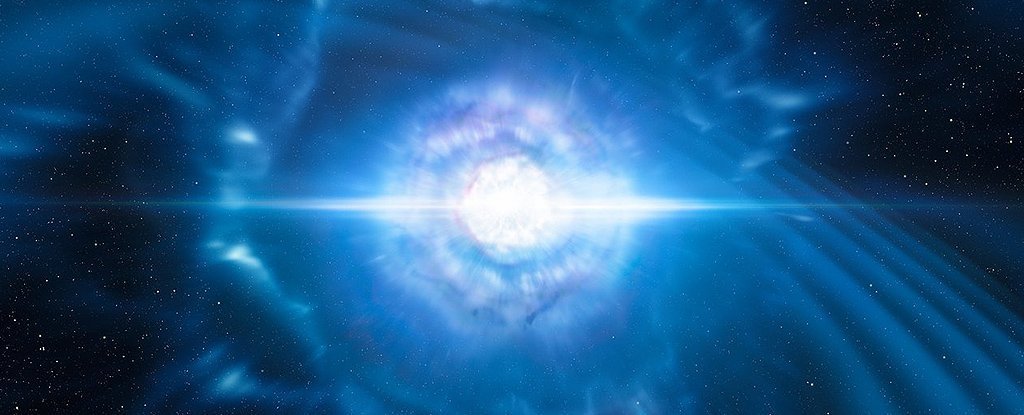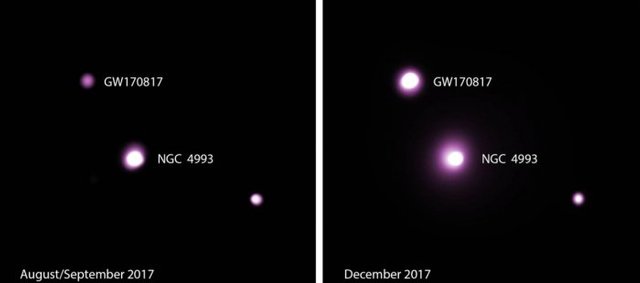
When something detonates, you anticipate that there will be a brilliant glimmer that dies down.
This is the thing that astrophysicists thought would happen when they watched the crash between two neutron stars last August - however as opposed to desires, it's as yet proceeding to light up a very long time after the occasion, leaving researchers dazed.
As indicated by information from NASA's Chandra X-Ray observatory, the repercussions of that crash is considerably more unpredictable and intriguing than anybody at any point anticipated.
We'd at no other time specifically watched a crash between two neutron stars. It was just on account of the new field of gravitational wave cosmology identifying swells in the very texture of room time that space experts around the globe could point their instruments at the occasion later named GW170817 on 17 August a year ago.
The staggering merger happened 138 million light-years from the Solar System.
Furthermore, we took in a considerable measure - for instance, impacts between neutron stars truly do create gamma-beam blasts, a portion of the brightest and most vivacious occasions in the universe. This affirmed a long-held speculation around one starting point of these displays.
The gamma-beam burst was named GRB170817A, and it was normal it would blur moderately rapidly - however that is not what happened.
Two days after the crash, no optical source was obvious - up until now, so ordinary. In any case, at nine days post-crash, Chandra information uncovered another X-beam source at the area of the burst.
"Normally when we see a short gamma-beam burst, the fly discharge produced gets splendid for a brief timeframe as it crushes into the encompassing medium – then blurs as the framework quits infusing vitality into the surge," clarified astrophysicist Daryl Haggard of McGill University, whose examination amass drove the new investigation.
"This one is extraordinary; it's unquestionably not a basic, unremarkable person limit fly."

Following 16 days post-impact, the question's position in the sky was excessively near the Sun for touchy X-beam estimations to be taken for quite a while. It wasn't until the point that 109 days had passed - early December 2017 - that space experts could reestablish their information gathering.
When they were capable, the examination group took X-beam readings of GRB170817A - and those December estimations were brighter than those taken toward the beginning of September. These were predictable with the radio information, which additionally demonstrated an expansion in shine at a similar rate.
This splendor can be clarified if the impact was more confounded than at first idea, the analysts say.
One potential reason would be if the crash between the neutron stars made a fly or outpouring, which thus stun warmed the material encompassing the new protest made by the impact (perhaps a dark opening).
This could then gleam in the X-beam and radio spectra for a considerable length of time following the occasion. The X-beam light bend matches expectations for this theory, despite the fact that the birthplace of the surge is as yet questionable.
Presently space experts are attempting to make sense of what the reason really is - and the material science behind it. Additionally observing from Chandra will help either approve or negate the surge show.
"This neutron-star merger is dissimilar to anything we've seen earlier," said co-creator Melania Nynka, likewise a postdoctoral specialist at McGill.
"For astrophysicists, it's a blessing that appears to continue giving."
GW170817 may have made a blemish on history, yet it's a long way from done. It will keep on being a standout amongst the most-considered questions in the sky for quite a while to come